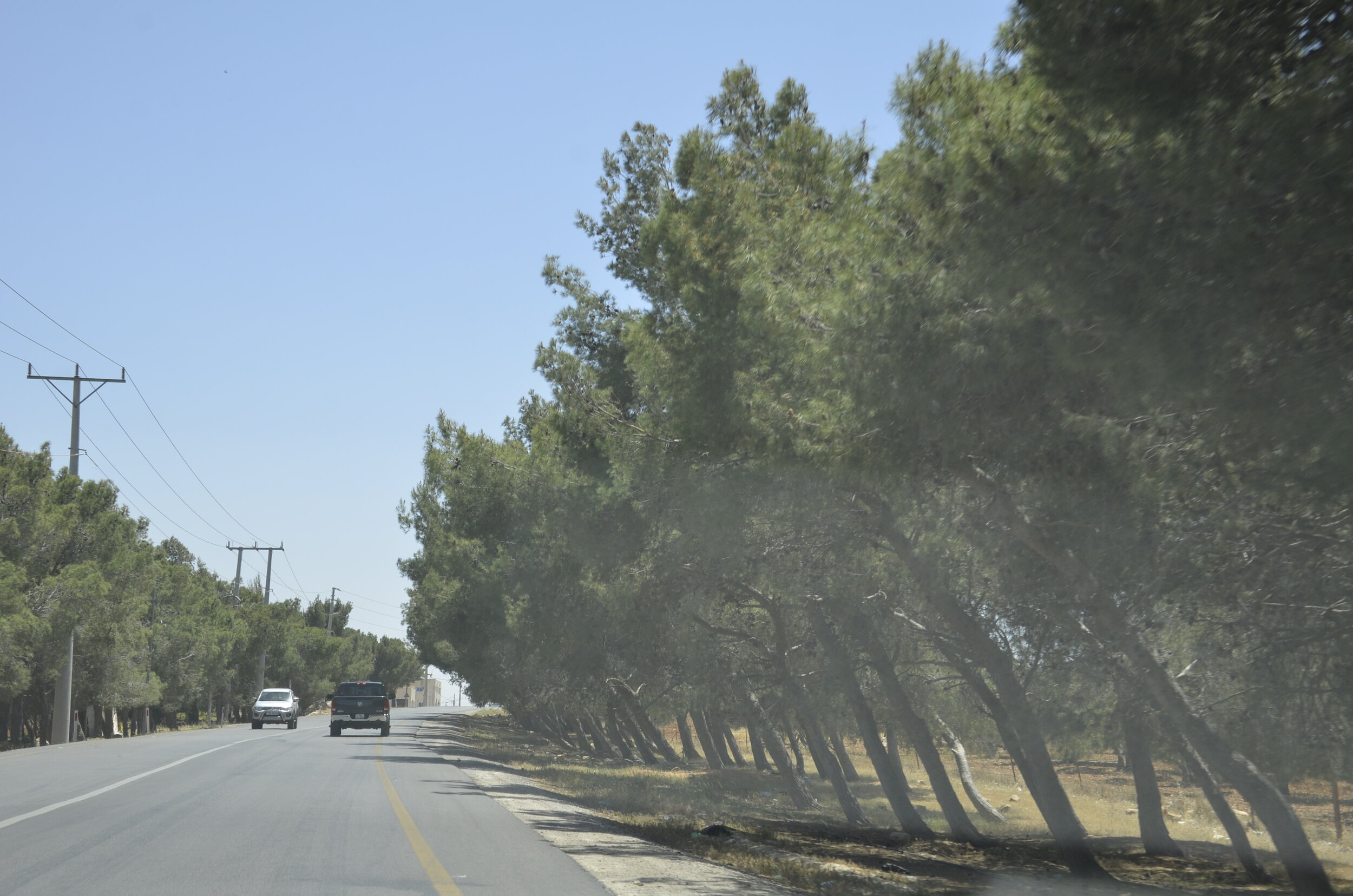Castles and Jordanian countryside
Even though the title says otherwise, the first place we visited upon driving south out of Amman, was Mount Nebo, said to be the burial place of Moses. He was led there by God and allowed to see the Promised Land but not enter it. The view from the mountain looking down to the Dead Sea (on the left side of the picture), with the far hills being Israel:
In the Byzantine church, there were beautiful mosaics that were completed in 530 AD.
The Brazen Serpent monument was sculpted to represent the bronze serpent Moses created in the wilderness, and Jesus’ cross. That’s an olive tree beside it (and for some reason, steps leading up to a stand where one can give a speech if one is so inclined) -
St. George’s Greek Orthodox Church in Madaba was our next destination, to see the Mosaic Map made in 560 AD, that originally depicted all the major biblical sites in the Middle East (and you can see the fish in the river).
I was entranced by the more recent mosaics on the walls, with their vivid colors and details:
Every town we passed through, no matter how small, had at least one mosque with speakers on the minaret, calling the faithful to prayers 5 times a day.
It was challenging at times to find food to eat on our travels through a Muslim country during Ramadan and amidst COVID restrictions. The faithful fast from sunup to sundown during the month of Ramadan, and then there was a curfew that closed restaurants at 8 pm (sundown was about 7:30 pm). Luckily, hotels were able to serve food any time, and there were a few restaurants open during the day.
Continuing south, we crossed Wadi Al Mujib, which is Jordan’s Grand Canyon.
Once back up on the other side, you could easily see from which direction the wind blew:
As we were driving on the “highway”, passing through towns, we marveled at their parking patterns (there was always one lane left open for traffic - barely) (that minivan is parked):
Next up was Kerak Castle. It is one of the largest Crusader castles in the Middle East and was started in 1142.
It was a warren of multiple levels and numerous rooms.
Again, Steve for scale -
We really enjoyed wandering all over by ourselves.
As we drove through the desert…
…we would occasionally encounter bright spots -
We stayed overnight in a guesthouse…
…perched on the edge of a canyon in Dana nature preserve.
As we hiked down a short ways, we picked up some friends -
The last castle that we visited, Shobak Castle, was the least preserved and we were led around by a local guide (not given a choice to do without).
It was built in 1115 by a Crusader king. Like the others we had seen, there were various levels -
I’ll close with a sunset from our balcony back at the Dana Guesthouse:
Next post is Petra!






















